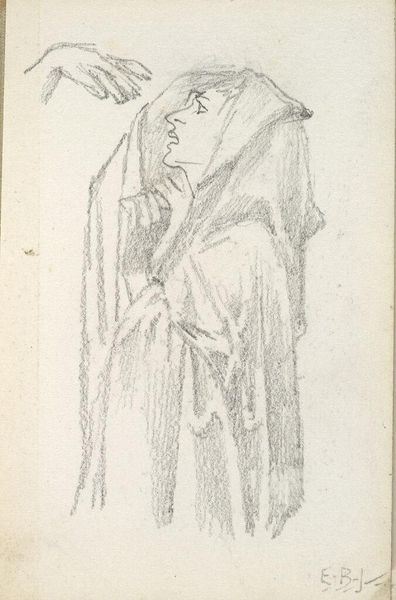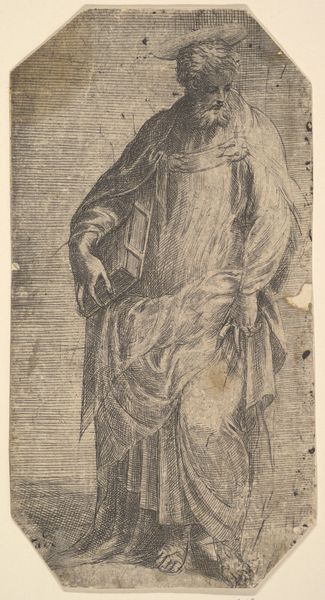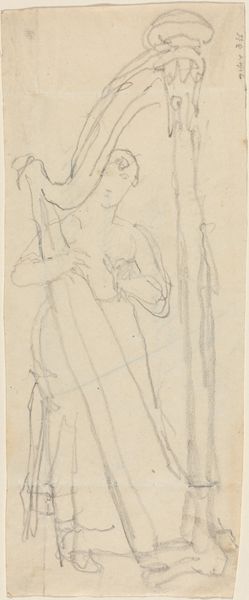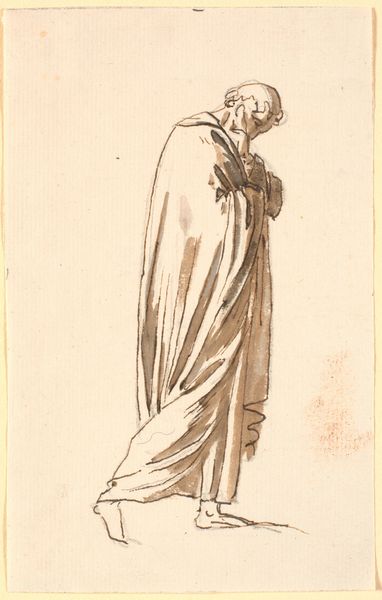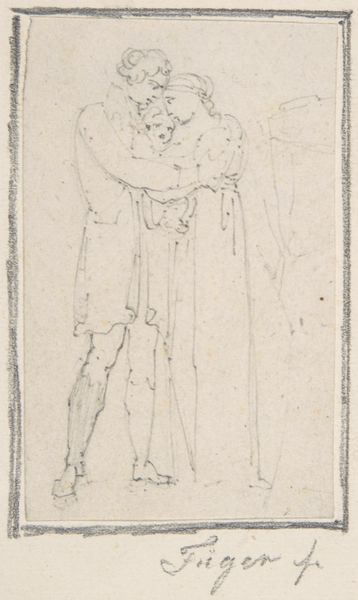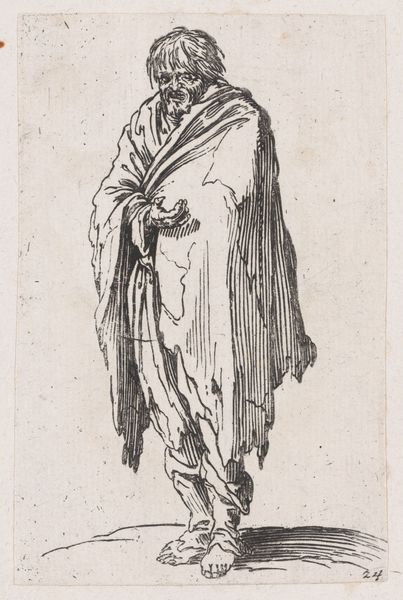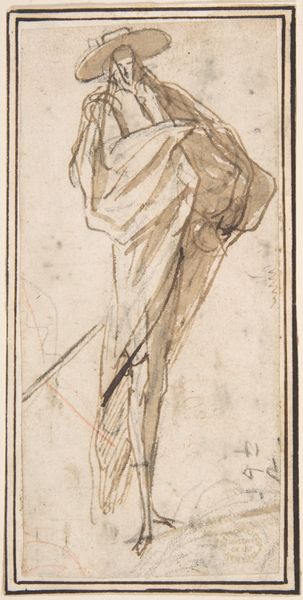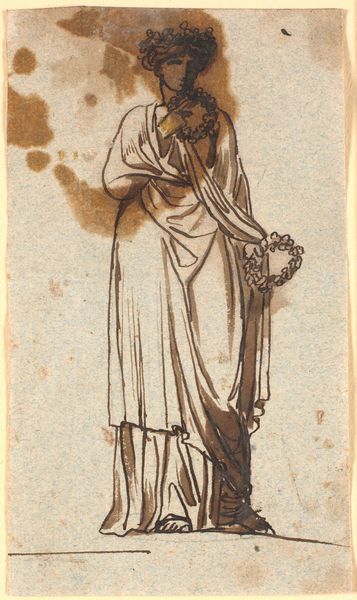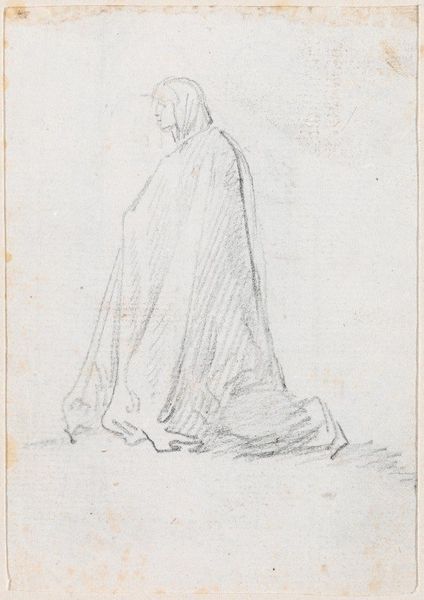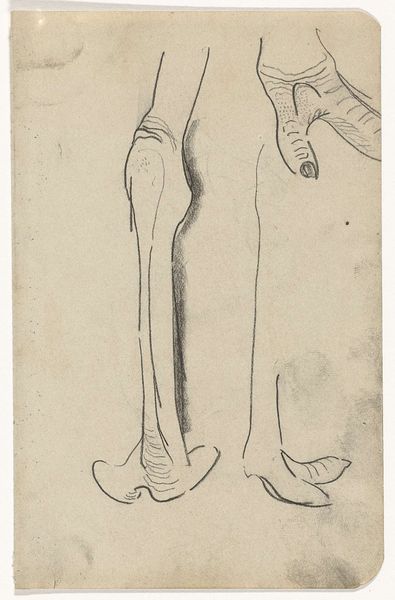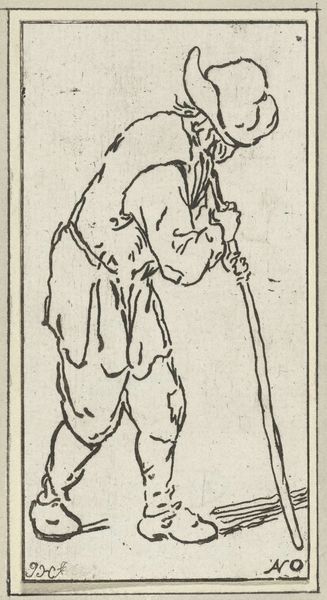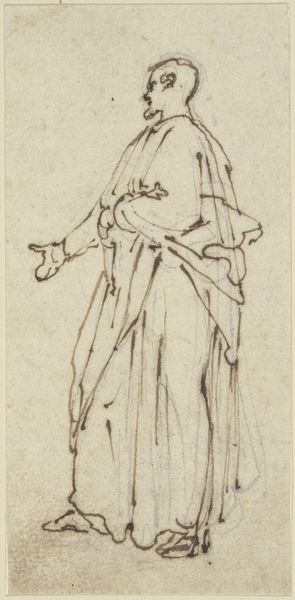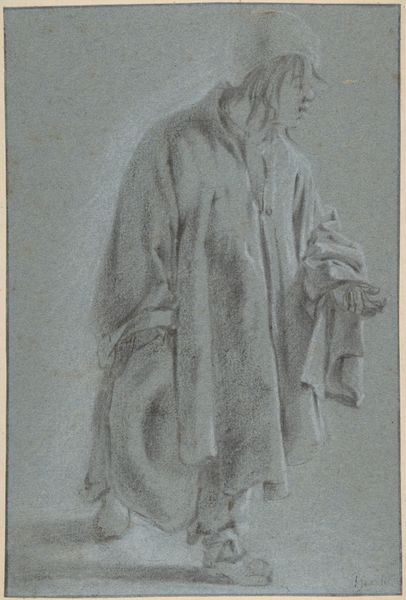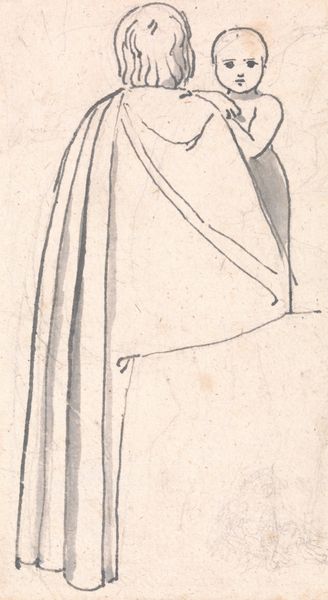
drawing, paper, pencil
#
portrait
#
drawing
#
dutch-golden-age
#
pencil sketch
#
figuration
#
paper
#
pencil
Dimensions: height 294 mm, width 170 mm
Copyright: Rijks Museum: Open Domain
Curator: We’re looking at a drawing here at the Rijksmuseum, titled "Standing Man with a Stick, Facing Left." It was created by Rembrandt van Rijn around 1629 or 1630, executed in pencil on paper. Editor: You know, what strikes me immediately is how quickly this seems to have come into being. It's almost like a thought, caught fleetingly on paper. There's something fragile about the rendering. Curator: Yes, I think you're right to pick up on that feeling. We should remember Rembrandt's engagement with the lives of ordinary people, particularly the elderly and those experiencing hardship. This piece provides some insight into his interests beyond his commissions with wealthier clients. The lines appear swift and economical, indicative of Rembrandt's mature observation of the human figure in everyday poses. Editor: It’s amazing, the way he's suggested the weight of the cloak, the stoop of the shoulders… You feel a real sense of lived experience. It isn't overly sentimental, but rather empathetic, a captured moment from the subject’s life. There’s a vulnerability that I didn’t expect. Curator: Exactly, and that's precisely what’s important to understand in terms of Rembrandt’s larger body of work. It serves as an excellent example of the ways in which an artist’s studies and preliminary sketches can humanize entire groups, bringing nuance and individuality into conversation with historically marginalized communities. Editor: It also raises all kinds of questions in my mind: Where is he going? What's he thinking? The open endedness almost invites you into the drawing… to complete the story yourself. Curator: Which is fascinating to consider within its own historical context! The early modern world presented any number of vulnerabilities based on identity— gender, race, age—and artistic portraits often helped shore up an individual’s social identity and political power. Editor: That makes me wonder, does the sketch's quick nature reveal some of that early modern vulnerability? Curator: I think that the work achieves a level of representational intervention that continues to speak meaningfully across the centuries, asking audiences to think about their connections to power, marginality, and community building today. Editor: I’m left with a feeling of admiration for Rembrandt's empathy, the way he managed to convey so much with such delicate lines. Curator: Ultimately, this drawing gives us insight into the social fabric of Rembrandt’s time, while inviting reflection on our own.
Comments
rijksmuseum about 2 years ago
⋮
Already early on in his career, Rembrandt enjoyed observing attentively and drawing the characters he happened upon in the street. Moreover, he was exceedingly skilful in the use of black chalk. He captured the pose and frame of mind of these three down-at-the-heels men with deft lines. He corrected the contours in areas with the sharpest point of his chalk.
Join the conversation
Join millions of artists and users on Artera today and experience the ultimate creative platform.
